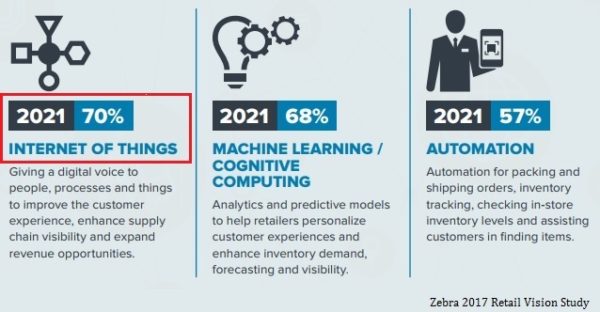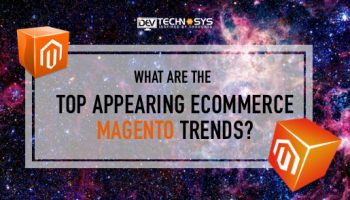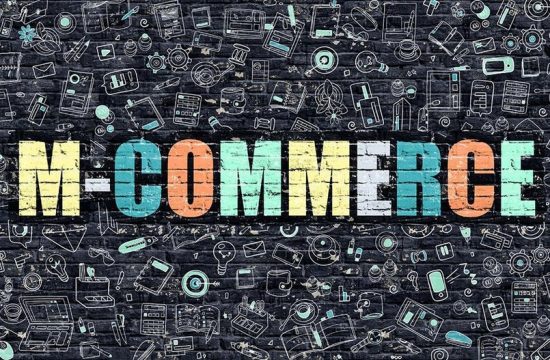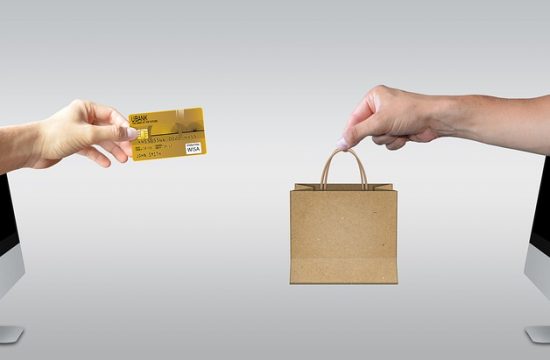
With the increasing adoption rate of internet and a large number of online shoppers, e-commerce has witnessed a steady growth. E-commerce is expected to become the future of retail, with most of the growth in retail sector taking place in the digital space. The global retail e-commerce sales was 1.86 trillion US dollars in 2016 and is expected to reach 4.48 trillion US dollars in 2021.

E-commerce sector is undergoing a major technological disruption. As the lifestyle of the consumers is changing and becoming more adaptive to online shopping, it is becoming crucial for the players in this industry to leverage technology to provide services that can lead to customer delight. When it comes to technology, IoT or Internet of Things is the latest buzz. IoT-enabled devices exchange data with each other through the internet, helping retail and e-commerce businesses to carry on their operations efficiently. The retail spend on the Internet of Things is expected to reach $2.5 billion by 2020! Below are some of the technology trends shaping the retail industry in future showing different areas in which retailers are planning investment in 2021.

IoT leads the list with 70% of the retailers ready to adopt the Internet of Things to improve consumer experiences worldwide. This shows that retail and e-commerce industry need to be on top of this trend to stay competitive and profitable.
With the advent of IoT devices like smart mirrors that lets customers try clothes virtually and Amazon dash button that assists users in reordering their desired products, this ingenious technology has completely changed the way consumers shop online. Below are some of the ways in which IoT is influencing the e-commerce businesses and helping them grow fast.
Inventory management
With the help of IoT, it becomes easy to keep track of inventory. IoT sensors and RFID tags make management of inventory in real-time possible, streamlining the entire flow. They improve the monitoring and tracking of inventory items, reducing human errors in reordering items. Information like product type, manufacturer’s name, the expiry date of the items and their batch IDs can be automatically stored in the system without human intervention. Smart shelves are useful in reducing customer dissatisfaction due to out of the stock products. They can track the number of products that have been sold and can place automatic orders as soon as the stock reaches reorder level.
Warehouse
IoT not only helps in optimizing inventory and reducing shortage but also eliminating over-stock of items in the warehouses. Temperature-monitoring sensors can be used to check the optimum temperature for perishable products and send alerts whenever needed. There can also be sensors that examine the forklifts in the warehouse for predictive maintenance to reduce the loss of productivity. Amazon uses warehouse robots to enhance the effectiveness of its picking and packing process. These robots can move at 8 km/h and load parcels of over 300 kg for now, which is expected to improve in coming future.
Supply chain management
An interrupted and efficient supply chain management is crucial to carry on operations of e-commerce businesses successfully. IoT ensures that goods move from one place to another smoothly. It enables tracking of goods right from the production stage to delivery.
RFID and GPS technology help in tracking the items in transit, giving complete information about location, temperature, and more. It also becomes possible to manage the route and speed of the shipped products, along with predicting about the arrival time periods, avoiding losing shipments or misplacing them. Sensors can be used in delivery trucks as well for real-time monitoring of the deliveries and decreasing losses.
Consumer Experience
IoT enables e-commerce businesses to differentiate themselves from their competitors in front of their clients. For example, Walmart uses IoT to get insights about the products which are popular on social media. This innovative technology allows retailers to deliver a comprehensive shopping experience to customers with a high-level of personalization, leading to clients’ satisfaction and engagement.
IoT can help in personalized advertising for e-commerce businesses to target a specific group of customers. It can recognize shopping patterns in search trends and online browsing, enabling businesses to sell targeted products to their customers. IoT will allow tailoring products, services and offers to customers’ choice. With more data available to marketers about consumer behavior, it will become possible to attract customers and influence their purchase decisions.
IoT also improves customer service, helping report issues even before they are noticed. This helps the businesses in anticipating possible complaints, leading to easy and prompt resolution and a smoother customer experience.
Conclusion
With more numbers of sensors, microchips, and actuators in place, IoT is expected to have a large impact on e-commerce businesses. As more devices get connected and gain smart features, more data will be gathered, and consumer experience can be improved. With the penetration of IoT, this industry will see a growth in revenue, a better management of inventory, easy tracking of thefts and losses and increase in shopper intelligence. There will be more intuitive websites, making it possible to customize consumer experience with new and accurate data!
Author: Nidhi Dave
Nidhi is working as a content and branding strategist at ClonesCloud – a clone scripts & web development company, recommending strategies that meet customers’ goals and deliver a superior user experience. She provides content leadership, ensuring that a consistent brand message is delivered to the audience.










